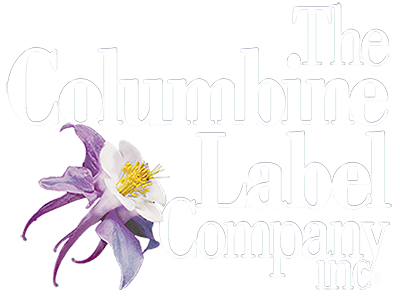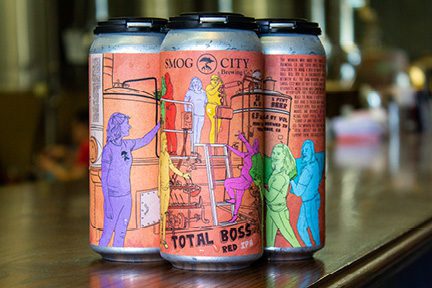The craft beer industry is thriving, and competition for shelf space has never been tougher. As breweries grow and expand distribution, the visual impact of a label can determine whether a customer reaches for your beer or the one next to it.
That’s why it’s essential to understand the ins and outs of craft beer label printing—from size and material to design and application. Whether you’re creating custom labels for cans, bottles, or kegs, the right label not only reflects your brand but also performs in tough environments.
The next Craft Brewers Conference & BrewExpo America will be held in Philadelphia, PA, April 20–22, 2026—the largest industry event for craft brewers nationwide. It’s the perfect opportunity to explore label trends, materials, and printing technologies that help your product stand out in a crowded market.
Standard Craft Beer Label Sizes
An experienced beer label printer can create virtually any size you need, but standard label dimensions often help brewers control costs and ensure faster turnaround times.
| Container Type | Common Label Size | Notes |
|---|---|---|
| 12 oz Can | 8.1875” W × 3.5” H | Most widely used format for craft brews. |
| 16 oz Can | 8.1875” W × 5” H | Provides more room for creative artwork. |
| 32 oz Crowler | 10” W × 5.845” H | Often used for limited releases or to-go fills. |
| Keg Collar | 7” circular (3” inner hole) | Required by law for beer and wine kegs. |
| Bottles | Custom-sized | Must fit bottle shape and curvature; no single standard. |
Choosing the Right Material for Beer Labels
Labels used on craft beer cans and bottles must be suitable for wet application and a cold environment—from filling and label application to storage and end-use (i.e., a refrigerator or cooler full of ice). Beer labels are produced on sheets or rolls that include the facestock, adhesive, and release liner together for efficient printing and application. The specifications of each of those three materials are determined in advance by the printer for optimum performance.
environment—from filling and label application to storage and end-use (i.e., a refrigerator or cooler full of ice). Beer labels are produced on sheets or rolls that include the facestock, adhesive, and release liner together for efficient printing and application. The specifications of each of those three materials are determined in advance by the printer for optimum performance.
Facestock
Labels for craft beer cans and bottles are printed on a film material, which has proven durability for the application and end-use. Film labels are available in white, silver metallic, or clear. The silver metallic material provides a metallic look craft brewers often desire.
Adhesive
Like the facestock material, the adhesive used on craft beer labels must be able to withstand wet application and cold, moist environments during handling, storage, and usage.
Liner
Liner material can be paper or film. Paper liners are sufficient if labels are being applied by hand or with a tabletop applicator. When using mobile canners or high-speed canning machines, film liners won’t tear like paper and reduce production issues.
Shrink Sleeve
These 360° full coverage “labels” are printed on a variety of durable film substrates that requires no adhesive and are applied with a special process that includes a heat or steam tunnel.
Keg Collars
These are required by law on kegs of beer and wine. The materials used are different than can and bottle labels. The facestock is made of a thicker material and when adhesive is needed, the collars have a special removable adhesive that does not leave a residue.
Design and Printing Considerations
Craft beer can and bottle labels are as unique as the contents. In addition to the considerations above, craft brewers need to keep other things in mind:
- White ink with metallic and clear film: When printing on silver metallic film, to achieve a non-metallic look in specific areas of the design, the label design artwork must include a hidden layer of white. White ink will be laid down in the printing process under the desired surface ink color to block out the metallic facestock and create an opaque, non-metallic color. The same hidden layer of white ink is used when printing on clear film. The final label design must incorporate a layer of white where opaque ink coverage is needed.
- Label application process: Final specs for craft beer can labels and custom labels for beer bottles must take into consideration the label application process, whether it is done by hand, with a tabletop applicator, a mobile canner, a high-speed applicator, or a shrink sleeve process.
- Bringing the printer into the picture: For craft brewers, every decision can impact the success of a new brew. The label is no exception. Working with a printing company, seasoned in craft beer label printing, early in the process is critical to make the right choices upfront. This includes consulting with your printer on label size, shape, and label machine specs for canning or bottling.
Partner with the Craft Beer Label Experts
At Columbine Label, we’re proud to work with some of the most creative and fastest-growing craft brewers around. We understand how to balance bold design with technical precision so your cans, bottles, and kegs look just as good in coolers as they do on shelves.
Our team offers guidance on every detail—from measuring containers and selecting materials to optimizing your artwork and preparing files for print. Whether you’re launching a new IPA or refreshing a flagship brand, we’ll help you design labels that reflect your craftsmanship and stand up to real-world conditions.
Contact us today for a free consultation or custom quote—and let’s craft labels that make your beer impossible to overlook.


